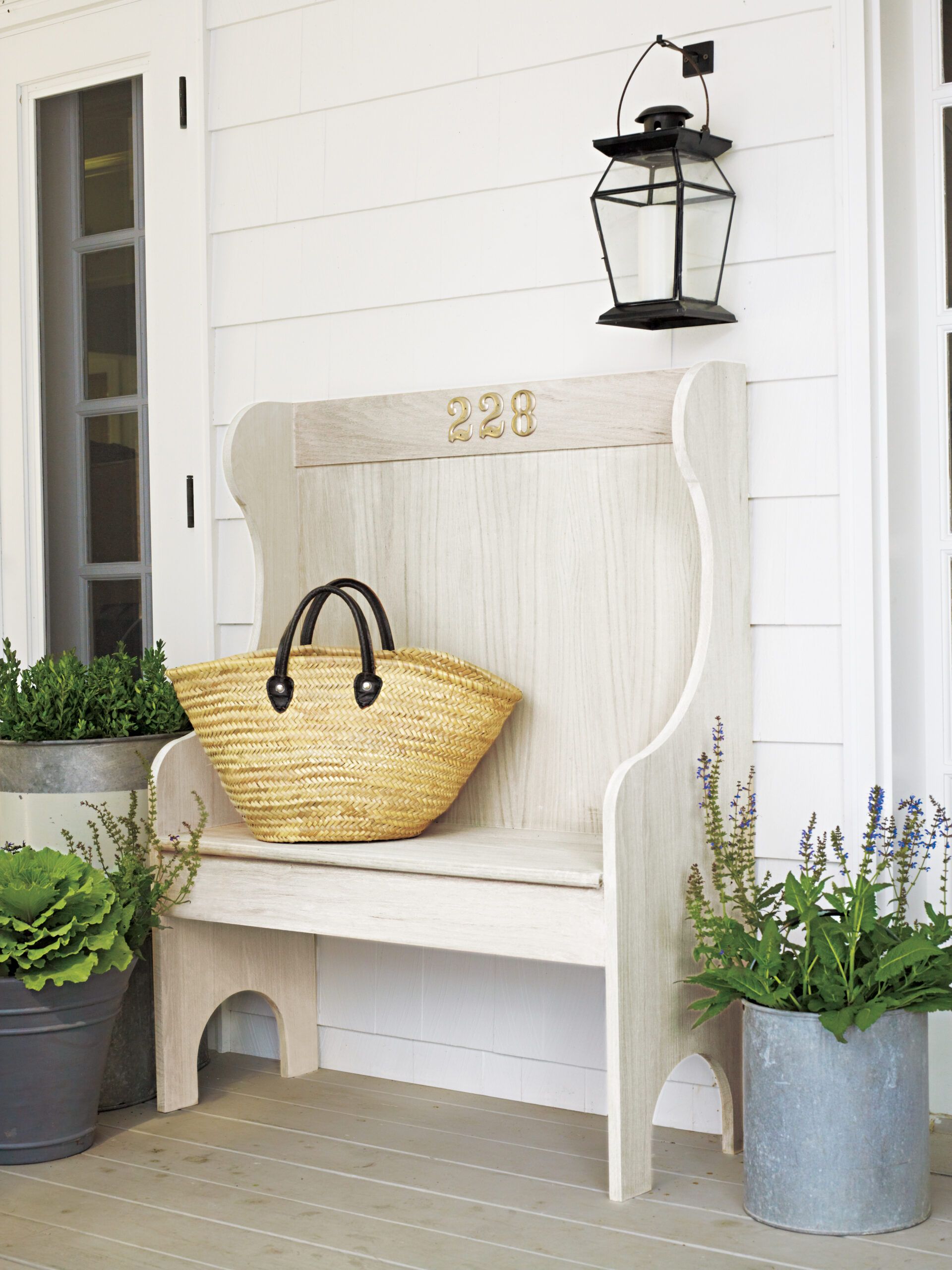We may be compensated if you purchase through links on our website. Our team is committed to delivering honest, objective, and independent reviews on home products and services.
Project details
Skill
Cost
Estimated Time
Pickling wood is a technique that transforms light-colored woods like pine, oak, or ash into ethereal, sun-bleached beauties. This “limed” look stems from the 16th-century European practice of infusing wood with a paste of caustic lime to ward off insect infestation. Today, it’s primarily used for its decorative value. It creates a weathered, driftwood-like appearance that adds character to furniture and architecture. In this guide, we’ll walk you through the steps to achieve a stunning pickled finish on wood using a simple mixture of primer and water or a commercial pickling solution.
Pickling an Oak Bench
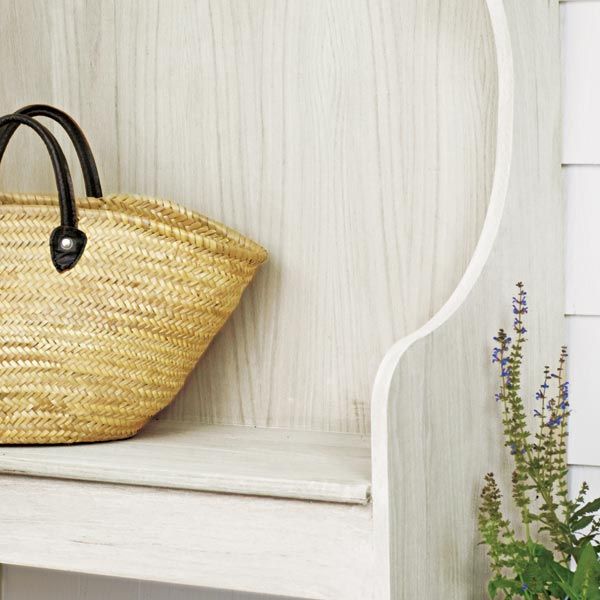
Pickling wood is a straightforward process that involves sanding the wood, applying a whitewash solution, and wiping it off to reveal a beautiful, weathered look. This technique is a great choice for wood pieces, including furniture like the red oak bench shown here, pine floors, beadboard wainscot, and paneled shutters. The whitewash collects in the darker grain, creating a sun-bleached negative of the natural wood for a weathered, driftwood look.
You can use leftover primer to create a simple pickling solution, but commercial options like Minwax White Wash Pickling Stain exist for convenience. It costs around $15 for a quart on Amazon and from home improvement stores like Lowe’s. These pre-mixed solutions offer consistent results, saving you time on preparation. Whether you choose to make your own solution or use a commercial product, the process is simple and the results are equally striking.
Step 1: Prep the Bench
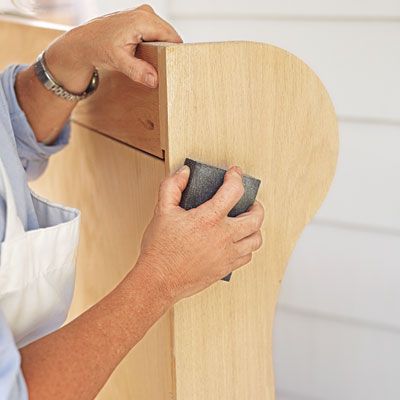
Before you begin the pickling process, prepare the wood surface. This step helps the pickling solution adhere evenly and produce the desired effect, so don’t rush through the process. Here’s how to prep your wood:
- Start by using a medium-grit sanding sponge to scuff up all the surfaces of the wood. This opens up the wood’s pores, allowing the pickling solution to penetrate more effectively.
- Always work with the grain of the wood when sanding. This prevents scratches for a smooth finish.
- Once you’ve finished sanding, vacuum up any sawdust. Pay special attention to corners and crevices where dust might accumulate.
- After vacuuming, wipe the entire surface with a reusable microfiber cloth. This final step removes any remaining dust particles and leaves the wood clean and ready for pickling.
Step 2: Brush on Pickling
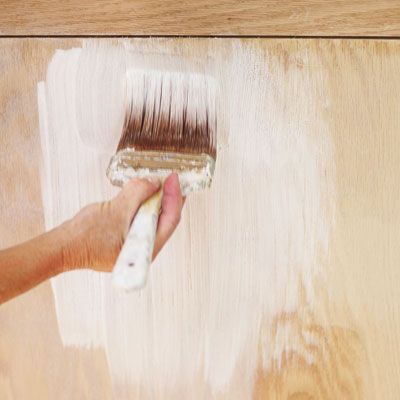
Now that your wood is prepped, it’s time to apply the pickling solution. If you’re using a homemade mixture, combine 1 part white latex primer-sealer with 3 parts water. If you’re using a commercial product, follow the manufacturer’s instructions for application.
Use a 4-inch brush to apply a patch of the pickling solution to the wood surface. Work in small sections to ensure even coverage and prevent the solution from drying before you can wipe it off. While applying the solution, keep your brush strokes even and smooth. This attention to detail during the application will minimize streaks and blotches and make subsequent steps easier to manage.
Tip: If you’re working with soft woods like pine, apply a water-based wood conditioner first. This extra step helps the pickling solution take more evenly across the surface. After applying the wood conditioner, sand the surface lightly before applying the pickling solution. This additional sanding helps create an even more uniform finish.
Step 3: Rub It In, Wipe It Off
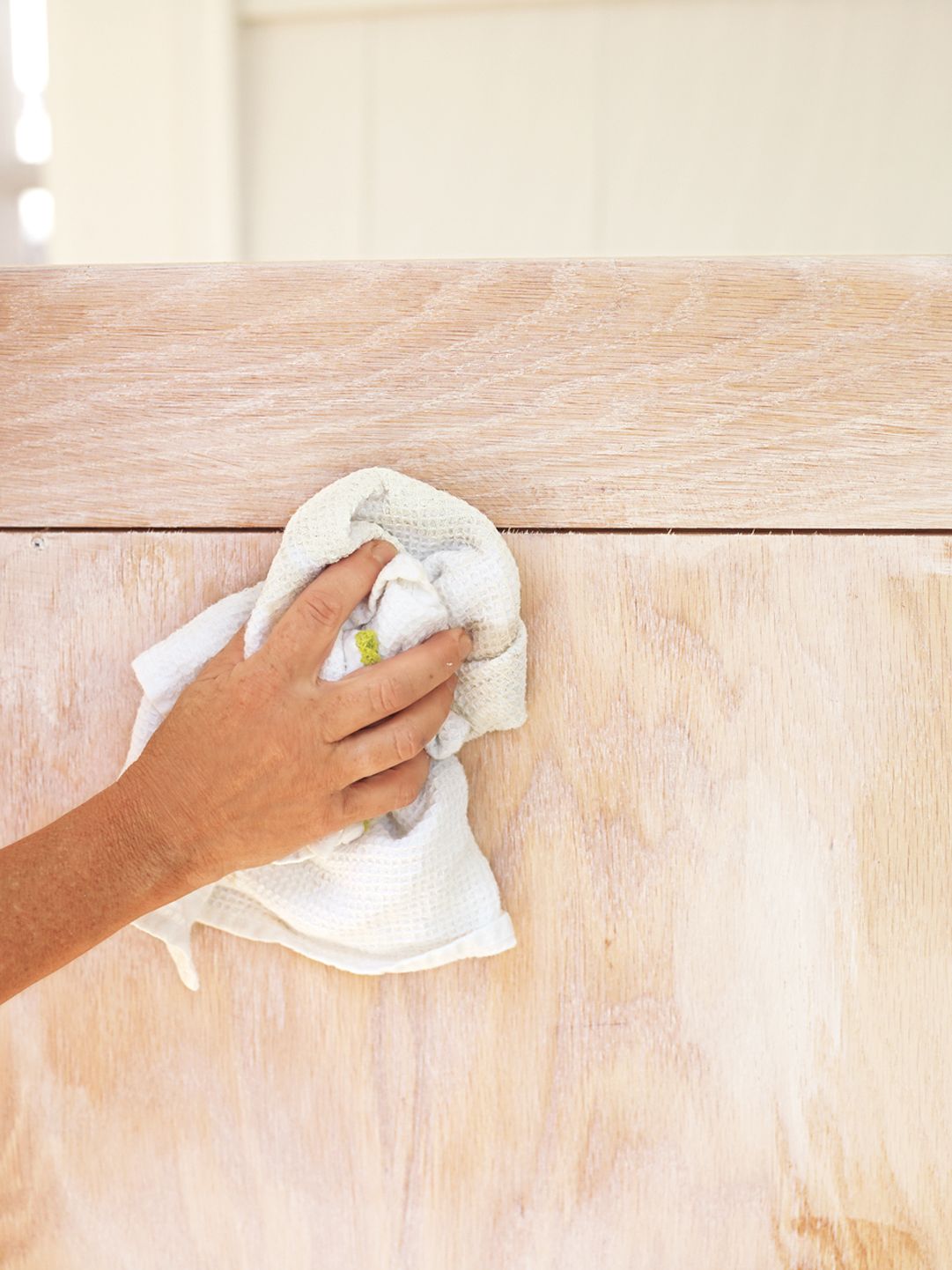
The key to achieving a beautiful pickled finish lies in how you work the solution into the wood and remove the excess. This step requires some elbow grease but creates the coveted weathered look. Follow these steps:
- Using a clean, dry rag, work the pickling solution into the wood by rubbing against the grain. This action helps the solution penetrate the wood fibers more deeply.
- Next, take a fresh rag and wipe with the grain to remove the excess solution. This step exposes the natural grain of the wood while leaving behind a subtle whitewash in the pores and grooves.
- Repeat this sequence of rubbing and wiping, working in patches to cover the entire surface evenly. Take your time to ensure a consistent look across the whole piece.
- Once you’ve covered the entire surface, allow your pickled wood finish to dry overnight.
Be patient during this stage. Rushing through the rubbing and wiping can lead to an inconsistent finish, undermining the effort you’ve put into preparation and application. The overnight drying period locks in the pickling solution.
Step 4: Apply Clear Coat
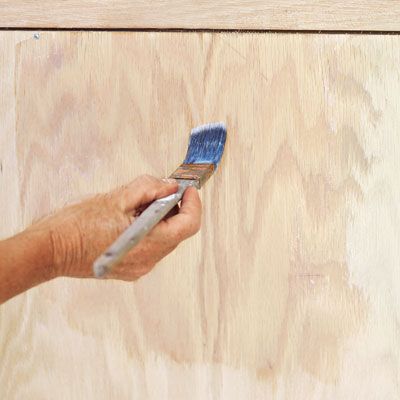
To protect your newly pickled finish, we recommend applying a clear coat. This final step seals the wood and enhances the pickled effect. Here’s how to apply it:
- Start by stirring (not shaking) a can of polyurethane clear coat. Shaking can introduce bubbles that may mar the finish.
- Pour some of the clear coat into a lined paint cup for easy application.
- Using a 2-and-1/2-inch paintbrush, evenly coat the entire surface of the bench or your pickled wood project. Apply a thin, even layer to avoid drips or pooling.
- Allow the first coat to dry for 24 hours. This drying time is crucial for a durable finish.
- After the first coat has dried, lightly sand the surface with a fine-grit sanding sponge. This step helps the second coat adhere better and creates an ultra-smooth finish.
- Wipe down the surface thoroughly with a dry rag to remove any sanding dust.
- Apply a second coat of polyurethane, following the same process as the first coat.
- If your pickled wood piece will be exposed to the elements, such as on a covered porch, consider applying a third coat for extra protection.
This step will highlight the pickled pattern, adding depth and dimension to the wood’s appearance. Multiple layers of clear coat increase the durability of the wood, so it’s a good idea in high-traffic areas.
Maintaining Your Pickled Wood Finish
To help preserve the beauty of your pickled finish, dust it regularly with a soft, dry cloth to prevent dirt buildup. Clean spills immediately to prevent staining or damage to the finish, and avoid placing hot items directly on the surface, as this can damage the clear coat. Reapply a clear coat every few years, or as needed, to maintain protection. Keep pickled wood out of direct sunlight to prevent fading or yellowing of the finish.
Tools
 sanding sponges
sanding sponges Small plastic bucket
Small plastic bucket nylon-polyester paint brush – 2 1/2-inch
nylon-polyester paint brush – 2 1/2-inch paint cup and liners
paint cup and liners Rags
Rags
